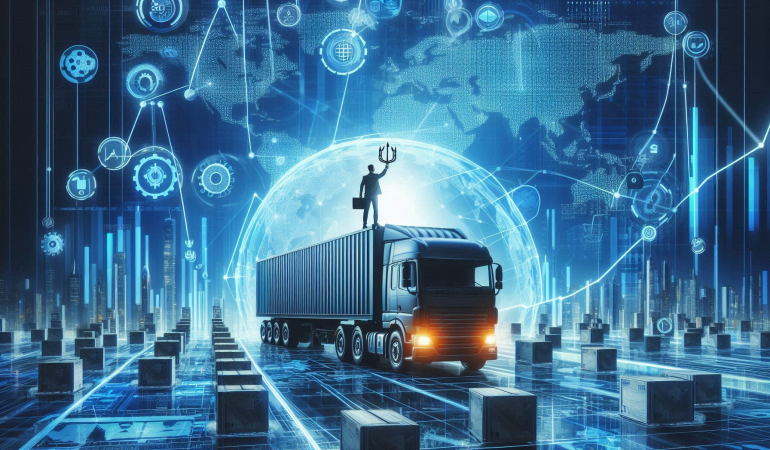
The Future of Supply Chain Analytics: Trends and Innovations.
Jul 20, 2024
The
Future of Supply Chain Analytics: Trends and Innovations.
In today’s blog post, I’ll discuss how
supply chain analytics is evolving and the key trends and innovations shaping
its future. By leveraging advanced technologies like AI, IoT, blockchain, and
more, businesses can enhance efficiency, reduce costs, and gain a competitive
edge in the ever-changing global market.
Supply chain analytics is evolving rapidly,
driven by technological advancements and the increasing complexity of global
supply chains. As businesses strive to enhance efficiency, reduce costs, and
gain a competitive edge, understanding the future trends and innovations in
supply chain analytics becomes crucial.
1. Artificial
Intelligence and Machine Learning
AI and Machine
Learning (ML) are transforming supply chain
analytics by enabling predictive and prescriptive insights. These technologies
can analyze vast amounts of data to forecast demand, optimize inventory levels,
and enhance decision-making processes. Key applications include:
- Demand Forecasting: AI algorithms
predict future demand more accurately, allowing businesses to adjust
production and inventory accordingly.
- Supply Chain Optimization: ML models
optimize routes and schedules, reducing transportation costs and improving
delivery times.
- Risk Management: AI identifies
potential disruptions in the supply chain and suggests mitigation
strategies.
2. Internet of Things
(IoT)
IoT devices
provide real-time data from various points in the supply chain, enhancing
visibility and enabling proactive management. Key benefits include:
- Real-Time Tracking: Sensors and GPS
devices track the location and condition of goods in transit, ensuring
timely deliveries and quality control.
- Predictive Maintenance: IoT data helps
predict equipment failures, allowing for scheduled maintenance and
reducing downtime.
- Enhanced Collaboration: IoT enables
better communication and coordination among supply chain partners.
3. Blockchain Technology
Blockchain ensures transparency
and security in supply chain transactions. Its decentralized nature provides an
immutable record of transactions, which is crucial for:
- Traceability: Blockchain tracks the
origin and journey of products, ensuring authenticity and compliance with
regulations.
- Fraud Prevention: It reduces the
risk of counterfeiting and fraud by providing a secure, transparent ledger
of all transactions.
- Smart Contracts: These
self-executing contracts automate processes, reducing administrative
overhead and ensuring timely payments.
4. Advanced Analytics and
Big Data
The integration of Advanced Analytics
and Big Data helps organizations derive actionable insights
from complex datasets. Key applications include:
- Supply Chain Segmentation: Analyzing data
to segment supply chains based on demand patterns, product types, and
customer preferences.
- Scenario Planning: Using data
analytics to simulate various supply chain scenarios and their potential
impacts.
- Performance Monitoring: Continuous
monitoring of key performance indicators (KPIs) to identify areas for
improvement.
5. Digital Twins
Digital Twin technology creates virtual replicas of physical supply chains,
allowing businesses to simulate, analyze, and optimize operations. Key benefits
include:
- Simulation: Testing different supply
chain strategies in a virtual environment to identify the most effective
ones.
- Optimization: Continuously optimizing
supply chain processes based on real-time data and predictive analytics.
- Risk Mitigation: Identifying
potential issues before they occur and developing contingency plans.
6. Cloud Computing
Cloud Computing provides scalable,
flexible, and cost-effective solutions for managing supply chain data and
applications. Key advantages include:
- Scalability:
Easily scale resources up or down based on demand, ensuring optimal
performance and cost-efficiency.
- Collaboration: Enhance
collaboration among supply chain partners through shared platforms and
data.
- Data Security: Advanced
security features protect sensitive supply chain data from breaches and
cyber-attacks.
7. Sustainability and
Green Supply Chains
Increasing focus on sustainability is driving innovations in green
supply chain practices. Key trends include:
- Carbon Footprint Reduction: Using analytics
to identify and implement strategies for reducing carbon emissions in the
supply chain.
- Circular Economy: Implementing
practices that promote recycling, reusing, and reducing waste.
- Sustainable Sourcing: Ensuring that
materials and products are sourced responsibly and ethically.
Conclusion:
The future of supply chain analytics is
bright, with numerous innovations poised to transform how businesses operate
and compete. By leveraging AI, IoT, blockchain, advanced analytics, digital
twins, cloud computing, and sustainable practices, organizations can achieve
greater efficiency, resilience, and sustainability in their supply chains.
Staying ahead of these trends will be crucial for businesses looking to thrive
in an increasingly complex and dynamic global market.
For more detailed guidance and in-depth training, visit our training here.

